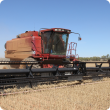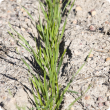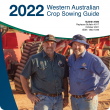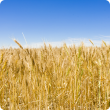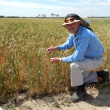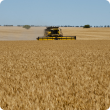Crops
The Department of Primary Industries and Regional Development continues to support the growth and international competitiveness of all crop industries in Western Australia.
With a 2400 kilometre span from its tropical north to its temperate south, WA supports a broad range of cropping industries from rain-fed winter cereals through to irrigated horticultural crops.
In the 2012/13 year the WA cropping industries exported a total of $3.9 billion which comprised: $3.1 billion of cereals, $859 million of pulses, pastures and oilseeds, $142 million of horticultural crops. The major contributors to these exports were wheat ($2.7 billion), canola ($756 million), barley ($377 million), lupins ($42 million), carrots at $48 million, oats ($12 million), and strawberries at $5.5 million.
Filter by search
Filter by topic
- Grains (39) Apply Grains filter
- (-) Remove Wheat filter Wheat
- (-) Remove Production & postharvest filter Production & postharvest
- Plant nutrition (17) Apply Plant nutrition filter
- Grains research & development (15) Apply Grains research & development filter
- Sowing (12) Apply Sowing filter
- Climate, land & water (9) Apply Climate, land & water filter
- Fertiliser (7) Apply Fertiliser filter
- Barley (6) Apply Barley filter
- Soils (6) Apply Soils filter
- Soil management (6) Apply Soil management filter
- Soil constraints (5) Apply Soil constraints filter
- Breeding & varieties (5) Apply Breeding & varieties filter
- Soil acidity (4) Apply Soil acidity filter
- Storage (4) Apply Storage filter
- Liming (4) Apply Liming filter
- Postharvest (4) Apply Postharvest filter
- Canola (4) Apply Canola filter
- Harvesting (3) Apply Harvesting filter
- Oats (3) Apply Oats filter
- Climate & weather (3) Apply Climate & weather filter
- Frost (2) Apply Frost filter
- Soil carbon (1) Apply Soil carbon filter
- Pulses (1) Apply Pulses filter
- Soil nutrients (1) Apply Soil nutrients filter
- Feeding & nutrition (1) Apply Feeding & nutrition filter
- Livestock & animals (1) Apply Livestock & animals filter
- Livestock management (1) Apply Livestock management filter
- Measuring and assessing soils (1) Apply Measuring and assessing soils filter






